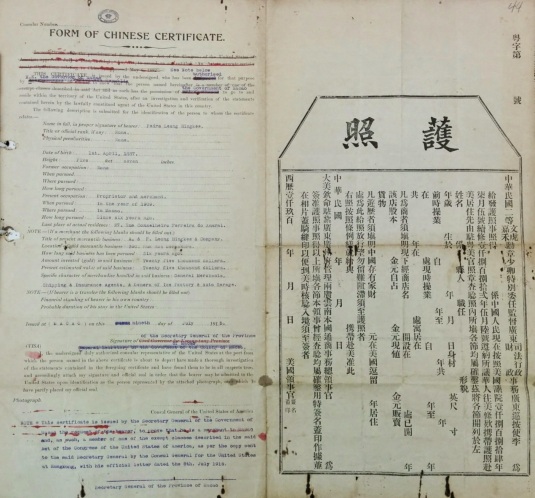In May 1882, the US Congress passed a law to restrict the entry of Chinese into the United States. The law and the further restrictions that followed it, together known as "Chinese Exclusion Act", were seen as a stark discrimination against Chinese immigrants. On 27 April 1904, the US Congress indefinitely extended the various Chinese exclusion laws. This action intensified the resentment of the Chinese and triggered a boycott of US goods in China in 1905. In response, the US government relaxed restrictions on teachers, students, merchants and tourists entering the country, but the Act remained in force.
In a record of the Secretariat General of the Government of Macao in 1915, there is an application of Macao Chinese merchant Pedro Leong Hing Kee for a passport for business travel to Manila in Philippines. Given that the Philippines was a colony of the United States (1898-1946) and was considered a part of the country, in addition to the submission of a written application and certificate of no criminal record for the consideration of the Governor of Macao, the applicant was required to apply for an entry permit from the Consul General of the US in Hong Kong and present a proof of his merchant status as stipulated in the "Treaty, Laws, and Regulations Governing the Admission of Chinese".
For a better understanding of the related rules and regulations, the Secretariat General of the Government of Macao wrote to the Consul General of the US in Hong Kong and obtained a copy of "Treaty, Laws, and Regulations Governing the Admission of Chinese" that was promulgated in Washington in 1913.

Treaty, Laws, and Regulations Governing the Admission of Chinese Edition of 24 February 1913

Passport for entry into the United States
SC
2015/03/31